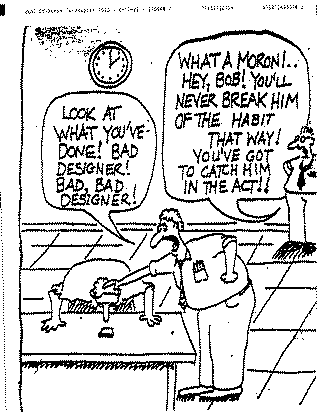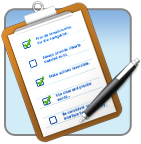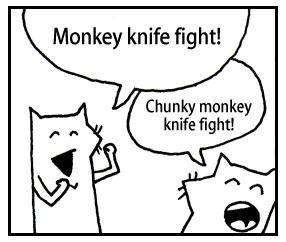From designing in silos to designing as a community
Do you have any of these symptoms?
-  You are the sole designer in your time
- You have been assigned to support a business vertical as an individual designer to do UI design, HTML fixes, javascripty stuffs
- You spend time browsing the net to know whats hot and happening in your domain
- Occasionally you try your hands on prototyping or brainstorming and try to sell it to the development team
If you answered YES to the above questions read on....
You have been identified as a 'Designer in a Silo'
So what are its major drawbacks?
- You get to make your own decisions
- No peer reviews of your designs
- You never think of trying ur designs with users and even if u think so they are shrugged off by your Dev manager for the reason of time and resource crunch
- You end up learning Java and think of switching careers or switching company
What can be done now?
Wait...Dont lose heart. You are not alone and there are many of your counterparts who have tried and failed. Some have tried and got through this tough channel with a lot of difficulty. Lets see what could have been a good way to champion usability in your organization.
Try these small nuggets of information to champion user experience in your company
- Make small little interesting activities and presentations to the developers and others on the benefits of usability. If you are good at video making, try your hand on making a 5mt clipping that tells a story of a struggling customer/user/fellow collegue with any application(could be an intranet payroll/tax application)
- Try teaching your manager on the importance of user experience and usability. See if you can get the buy in from top management on the importance of a team for the company. Share papers from Gartner, IDC, Nielson Norman, etc that speak about benefits and ROI(important) of user experience and Usability
- When you get an approval, try to recruit a small team of an interesting mix - ethnographer or anthropologist, interaction designer, usability engineer(HFI) - People can play multiple roles
(read 'Ten faces of Innovation' to understand various roles of people needed for a Design team)
- Start small projects with good ROI. Spend quality time on following the UCD(when u have time)
- Share results in industry standard formats(CIF). Spend quality time on this
- Take up company's ailing online projects and make a change
Its easy said than done. But it works fine after a few initial hiccups(budgets, time, client requirements)
Share your thoughts with me.
You are the sole designer in your time
- You have been assigned to support a business vertical as an individual designer to do UI design, HTML fixes, javascripty stuffs
- You spend time browsing the net to know whats hot and happening in your domain
- Occasionally you try your hands on prototyping or brainstorming and try to sell it to the development team
If you answered YES to the above questions read on....
You have been identified as a 'Designer in a Silo'
So what are its major drawbacks?
- You get to make your own decisions
- No peer reviews of your designs
- You never think of trying ur designs with users and even if u think so they are shrugged off by your Dev manager for the reason of time and resource crunch
- You end up learning Java and think of switching careers or switching company
What can be done now?
Wait...Dont lose heart. You are not alone and there are many of your counterparts who have tried and failed. Some have tried and got through this tough channel with a lot of difficulty. Lets see what could have been a good way to champion usability in your organization.
Try these small nuggets of information to champion user experience in your company
- Make small little interesting activities and presentations to the developers and others on the benefits of usability. If you are good at video making, try your hand on making a 5mt clipping that tells a story of a struggling customer/user/fellow collegue with any application(could be an intranet payroll/tax application)
- Try teaching your manager on the importance of user experience and usability. See if you can get the buy in from top management on the importance of a team for the company. Share papers from Gartner, IDC, Nielson Norman, etc that speak about benefits and ROI(important) of user experience and Usability
- When you get an approval, try to recruit a small team of an interesting mix - ethnographer or anthropologist, interaction designer, usability engineer(HFI) - People can play multiple roles
(read 'Ten faces of Innovation' to understand various roles of people needed for a Design team)
- Start small projects with good ROI. Spend quality time on following the UCD(when u have time)
- Share results in industry standard formats(CIF). Spend quality time on this
- Take up company's ailing online projects and make a change
Its easy said than done. But it works fine after a few initial hiccups(budgets, time, client requirements)
Share your thoughts with me.



